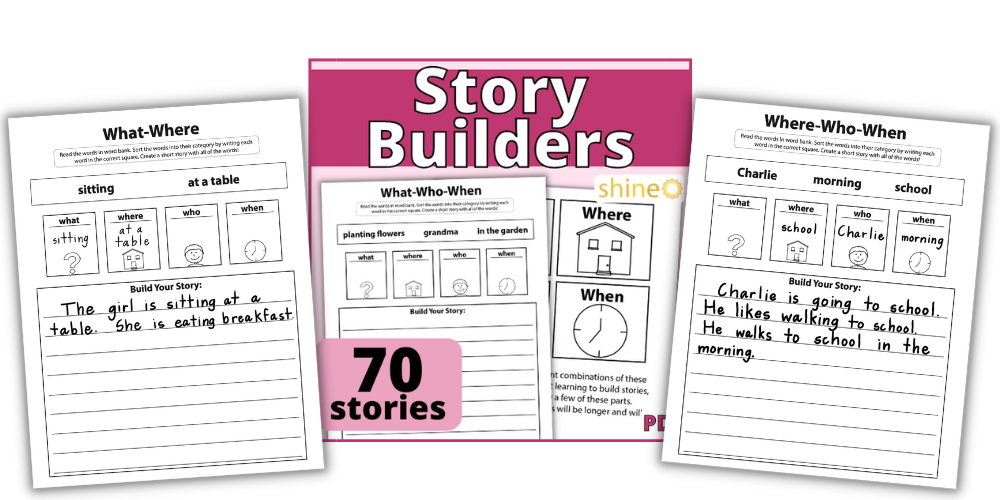Explore More..

Secrets Behind Story Telling from a Speech Therapist
Stories are a vital part of communication. Before children begin talking out loud, they begin forming stories in their mind. They may think of stories about their day and what they see, or they may think of imaginative stories that utilize their creative mind. When it comes to forming stories out loud, however, communicating stories with words can become more difficult for children. So, what's the secret to building great story telling skills?
A helpful strategy that speech therapists love to use is teaching comprehension of different story parts, and then having children build upon these story elements. Stories have a few different parts. These parts often answer questions about what, where, who and when.
Stories can have different combinations of these four parts - some beginning stories may include only a few of these parts, while more complex stories include multiple varieties of all of these parts. When children are first learning to build stories, they often start by using only a couple story parts. As their language continues to grow, their stories often become longer and include all of these parts.
A deeper look into story parts.
Let's take a deeper look into 4 common story parts:
What
What describes
the events and objects in the story.
Here are some examples:
The cat is running.
I have a book in my backpack.
She was talking to friends at school on Friday.
Where
Where describes the location of events in the story.
Here are some examples:
I have a book in my backpack.
She was talking to friends at school on Friday.
Who
Who describes the characters in the story.
Here are some examples:
The cat is running.
I have a book in my backpack.
She was talking to friends at school on Friday.
When
When describes the time of events in the story.
Here are some examples:
The cat is running in the morning.
She was talking to friends at school on Friday.
Children may be better at using one or a couple of these story parts, while struggling to use the other parts. If you notice that your child commonly uses only people, animals, or characters in their speech, they may be better at using the "who" category. If you notice that your child is great at describing actions, they may be more skilled at using the "what" category. On the other hand, if you notice that your child rarely uses words to describe location, they may struggle to communicate the "where" category.
Ultimately, it's important that children are able to include all of these different story elements into their language, though if you notice difficulty, it is best to target adding one new story element at a time. For example, if you notice that your child has difficulty using locations and times of events, begin by trying to add more locations only. Once they are using locations more frequently in their stories, then begin adding times of events.
As your child begins to master including all story parts, you can then encourage them to add multiple types of each part to their stories. For example, multiple people ("who"), multiple places ("where"), and multiple activities ("what"). Slowing increasing story complexity over time is the key to creating more complex stories.
Here is a great activity that simplifies using a variety of story parts to gradually increase story complexity:

Story Builders - learn more about story parts, and focus on building these parts into more complex stories.
Building stories is a foundational element to building great communication. I hope this resource helps you to facilitate better language through creating stories.
